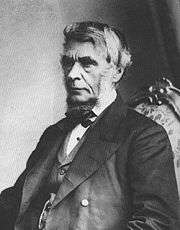Plant identification
Plant identification is the process of matching a specimen plant to a known taxon. It uses various methods, most commonly single-access keys or multi-access keys.
History

Plant identification has evolved over hundreds of years and depends to a large extent on what criteria and whose system is used. Plant identification implies comparisons of certain characteristics and then assigning a particular plant to a known taxonomic group, ultimately arriving at a species or infraspecific name.
In the history of botany many large systems, useful at the time, were widely used for decades until superseded as taxonomic knowledge progressed.
- Genera Plantarum[1] was devised by George Bentham (1800–1884) and Joseph Dalton Hooker (1817–1911) who were British botanists working for Royal Botanic Gardens, Kew in the latter part of the nineteenth century. They described the system in a three-volume work. A total of 202 groups were described, which they called "orders" - now known as families. The system was renowned for being very practical and the keys were quite accurate.
The study by of plant taxonomy with computer programmes was beginning by the early 1970s,[2] and botanical keys now use numerical computer systems.
Taxonomy
This is the branch of botany which deals with plant identification, nomenclature and classification. The term, first coined by French botanist A. P. de Candolle (1813). Carl Linnaeus used the term 'Systematics' which now includes identification, nomenclature and evolutionary relationships.
Herbarium
Reference collections of plant specimens are collected into herbarium and identified. Most plant parts are dried, pressed, mounted on herbarium sheets and stored; succulents and some other types of plants are normally kept in alcohol solution. The sheets are standard size of 161⁄2 × 111⁄2 inches or 41.25 × 28.75 cm. The identified plant ideally includes all parts including roots, flowers and fruits, strobili, etc. One of the largest herbaria in the world is kept at the Royal Botanic Gardens, Kew England and has collected an estimated 7 Million specimens.[3]
See also
- Alpha taxonomy
- Field guide
- Flower
- Plant morphology
- Plant physiology
- Pollen DNA barcoding
- Taxonomy
References
- Isely, Duane. 1994 One hundred and one botanists Iowa State University Press.
- Larry E. Morse (1974), "Computer-Assisted Storage and Retrieval of the Data of Taxonomy and Systematics", Taxon, 23 (1): 29–43, doi:10.2307/1218086, JSTOR 1218086
- "entry for RBG Kew", Index Herbariorum, retrieved 21 April 2015